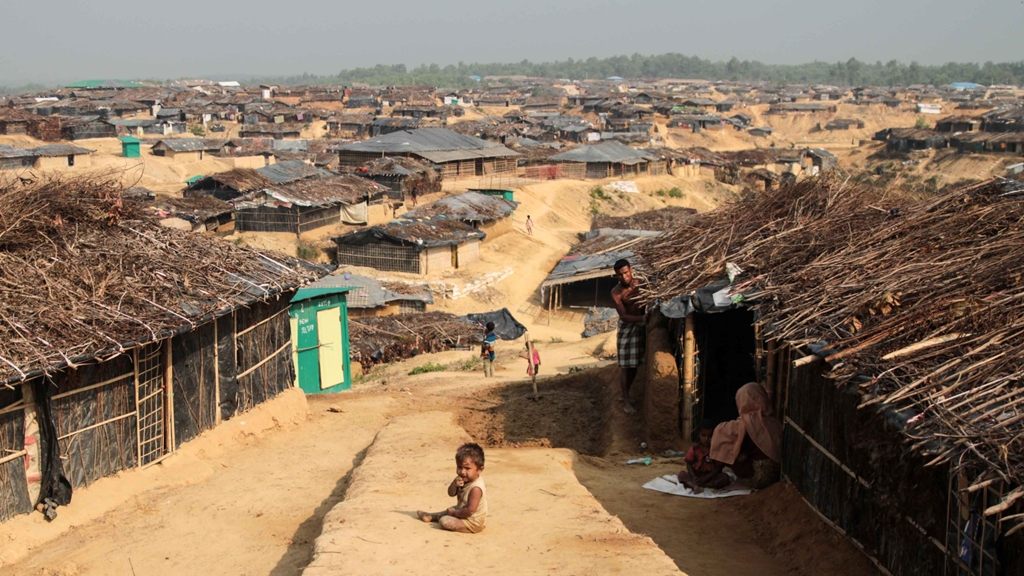
Rohingya refugees and coronavirus: A disaster waiting to happen?
- 29/03/2020
- 0
By John Pennington, ASEAN Today
The first confirmed case of the COVID-19 coronavirus in Cox’s Bazar has heightened concerns the outbreak will devastate the Rohingya community in nearby camps.
The arrival of COVID-19 in Bangladesh could spell disaster for the Rohingya community. Huge numbers of Rohingya refugees are marooned in refugee camps near Cox’s Bazar, where one of the country’s first fatalities occurred.
Hundreds of thousands of Rohingya Muslims fled Myanmar following a military crackdown in 2017. The persecuted community now faces a new invisible threat. With limited access to information, sanitisation and medical assistance, if the virus reaches the camps it could have terrible consequences.
Conditions in Bangladesh leave refugees vulnerable
There are an estimated 1.1 million Rohingya in Bangladesh with 630,000 in one camp in Kutupalong, near Cox’s Bazar. Social distancing is impossible with so many people crammed into small spaces. “We spend every waking and sleeping moment of our lives gathered with each other,” Mohammad Arfaat explained. “Our shelters are too close to each other. Dozens of people share each toilet and water well.”
Furthermore, Rohingya are not allowed to use telephones or access the internet. That has led to rumours spreading and prevented the dissemination of vital protective information. While a few have managed to establish contact with the outside world, they cannot pass on information to the whole camp. The communication ban means they cannot even follow the World Health Organisation (WHO) guidelines and phone for help if they need medical advice.
Things could be about to get a lot worse for the Rohingya
The Rohingya are highly exposed to infectious diseases, let alone one as contagious as COVID-19. In Bangladesh, the Rohingya have no access to face masks or hand sanitiser. They say all they have received is soap and instructions to wash their hands.
The monsoon season is around the corner, which will worsen conditions and make keeping clean even more challenging. Those in high-risk groups, including the elderly and those with existing conditions, even more vulnerable. People have reportedly left the camp and returned without being screened or tested for the disease. COVID-19 could already be among the Rohingya.
The refugee camps are often far away from urban areas and movement is limited. This has sheltered the camps from the disease so far. However, with confirmed cases of COVID-19 now less than 40 kilometres away, all it will take is one person to unknowingly enter the camp carrying the disease to infect thousands of others.
Their survival will depend on access to healthcare professionals, proper sanitisation and medicine—none of which are readily available.
Are there any lessons to be learned from elsewhere?
Unfortunately, those in refugee camps the world over are facing similar conditions and prospects. Humanitarian agencies warn it may be impossible to stop the virus spreading once it arrives, leaving the refugees to fend for themselves. Refugee camps are often omitted from disaster planning and can be hard to reach.
Elsewhere, governments in France and Greece have come under pressure to help those in refugee camps, but they are dealing with people inside their borders.
While Myanmar’s government reportedly has a plan to assist internally displaced people within Myanmar, that does not extend to its refugees overseas. It leaves the Rohingya relying on the Bangladeshi government and aid agencies, which are doing all they can to spread information and offer medical assistance.
COVID-19 could have painful long-term consequences
There is little optimism about the Rohingya’s current or future plight. “The coronavirus is a risk to everyone—but the greatest risks are to refugee communities like ours,” Arfaat added. “We hear the coronavirus has already reached Bangladesh, so it may only be a matter of time.”
Referring to those returning to the camp, Mojib Ullah, an activist based in Australia, painted an even more gloomy picture. “If they carry the virus and mingle with crowds, it would be another massacre, much bigger than what happened in 2017,” he said, referring to the crackdown that forced the Rohingya out of Myanmar.
The outbreak further reduces the Rohingya’s chances of being repatriated or relocated. Myanmar will not welcome them back and with borders closed and movement suppressed, and they cannot—or should not—move within Bangladesh. Their lives will remain on hold for some time to come.
There is a horrible sense that for now, they can do little more than wait for the inevitable and hope for the best. “It’s just a matter of time until the virus reaches the vulnerable population living in cramped conditions in the largest refugee settlement on Earth,” predicted Athena Rayburn, Save The Children’s head of advocacy in Cox’s Bazar. “Thousands of people could die.”






